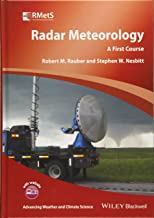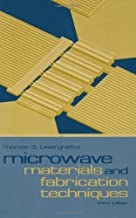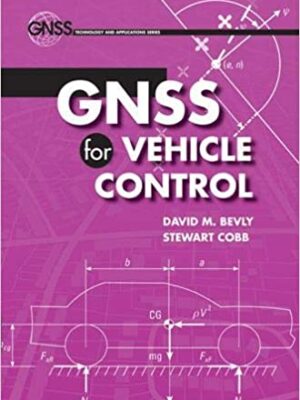Radar Meteorology: A First Course
Original price was: ₹6,176.00.₹4,940.80Current price is: ₹4,940.80.
ISBN: 9781118432624
Author/Editor: Robert M Rauber
Publisher: John Wiley
Year: 2018
1 in stock (can be backordered)
Description
A comprehensive introduction to the current technology and application of radar in meteorology and atmospheric sciences Written by leading experts in the field, Radar Meteorology, A first Course offers an introduction to meteorological radar systems and applications, with emphasis on observation and interpretation of physical processes in clouds and weather systems. This comprehensive introduction to the subject offers an overview of the quantities essential to radar meteorology including the radar reflectivity factor, and Doppler, dual-polarization, and multi-wavelength radar variables. The authors highlight wind retrieval from single and multiple Doppler radars, precipitation estimation and hydrometeorological applications, with chapters dedicated to interpretation of radar data from warm season mid-latitude severe weather, winter storms, tropical cyclones and more. In addition, Radar Meteorology highlights research applications of this burgeoning technology, exploring dynamic applications such as space-borne and ground-based vertically pointing radar systems, and cloud, airborne and mobile radars. As meteorological radars are increasingly used professionally for weather observation, forecasting and warning, this much-needed text: – Presents an introduction to the technical aspects and current application of radar as used in the meteorology and atmospheric sciences – Contains full-colour illustrations that enhance the understanding of the material presented – Examines the wide-range of meteorological applications of radar – Includes problems at the end of each chapter as a helpful review of the contents – Provides full instructor support with all illustrations and answers to problems available via the book’s instructor website. Radar Meteorology offers a much-needed introductory text to the study of radar as applied to meteorology. The text was designed for a one semester course based on the authors’ own course in Radar Meteorology at the University of Illinois at Urbana-Champaign.
Additional information
| Weight | 1.09 kg |
|---|
Product Properties
| Year of Publication | 2018 |
|---|---|
| Table of Contents | Preface xvii Acknowledgments xxi About the Companion Website xxiii 1 Properties of Electromagnetic Waves 1 1.1 Introduction 1 1.2 Electric and magnetic fields 2 1.2.1 The electric field 2 1.2.2 The magnetic field 4 1.2.3 Relating the electric and magnetic fields--a simple dipole antenna 5 1.2.4 Maxwell equations 6 1.3 The nature of electromagnetic radiation 8 1.3.1 The electromagnetic spectrum 8 1.3.2 Electromagnetic wave interactions 9 1.4 Interactions of electromagnetic waves with matter 11 1.4.1 Refraction 12 1.4.2 Reflection 12 1.4.3 Mie scattering 14 1.4.4 Bragg scattering 17 1.4.5 Absorption 18 1.5 Polarization of electromagnetic waves 18 Important terms 20 Review questions 21 Challenge problems 22 2 Radar Hardware 23 2.1 Introduction 23 2.2 Frequency and wavelength 23 2.3 Components of a weather radar system 25 2.3.1 Transmitter section 262.3.2 Waveguides, rotary joints, polarization switching devices, and circulators 28 2.3.3 The antenna section 32 2.3.4 The receiver section 36 2.3.5 Magnetron transmitters 38 2.4 Specialized radar systems 40 2.4.1 Phased-array radars 40 2.4.2 Mobile and deployable radars 41 2.4.3 Airborne radars 43 2.4.4 Spaceborne radars 44 Important terms 46 Review questions 47 Challenge problems 47 3 Radar Characteristics 49 3.1 Introduction 49 3.2 Range and range ambiguity 50 3.3 The transmitted and received signal 53 3.3.1 Pulse duration and pulse length 54 3.3.2 Power and the duty cycle 54 3.4 Radar geometry and types of displays 56 3.4.1 Common radar displays in spherical coordinates 56 Important terms 64 Review questions 64 Challenge problems 64 4 The Path of a Radar Ray 66 4.1 Introduction 66 4.2 Ray propagation in an idealized atmosphere 67 4.2.1 Factors influencing radar ray paths 67 4.2.2 The path of a ray in an idealized atmosphere 69 4.2.3 The range and height of a pulse volume in space 72 4.3 Anomalous propagation 74 Important terms 78 Review questions 78 Challenge problems 79 5 Power and the Radar Reflectivity Factor 82 5.1 Introduction 82 5.2 Radar equation for a solitary target 83 5.2.1 Power flux density incident on a target 83 5.2.2 Power flux density scattered back to the radar 85 5.2.3 Backscattered power collected by the radar antenna 86 5.2.4 Implications of the radar equation 87 5.3 Radar equation for a distributed target 89 5.3.1 The contributing volume for distributed targets 89 5.3.2 The radar cross section of distributed targets 91 5.3.3 The radar equation for a distributed target 94 5.4 The weather radar equation 95 5.4.1 Radar cross section of a small dielectric sphere 95 5.4.2 The radar reflectivity factor 96 5.4.3 The weather radar equation 97 5.4.4 The validity of the Rayleigh approximation 98 5.5 Summary 100 Important terms 101 Review questions 101 Challenge problems 102 6 Radial Velocity--The Doppler Effect 104 6.1 Introduction 104 6.2 Measurement of radial velocity 106 6.2.1 Phase measurements and radial velocity retrieval 107 6.2.2 Velocity ambiguities and their resolution 108 6.3 Doppler spectra 115 6.3.1 Doppler spectra of weather and other targets 116 6.3.2 Moments of the Doppler spectrum 117 6.4 Measurement of the Doppler moments 119 6.5 Summary 122 Important terms 123 Review questions 123 Challenge problems 124 7 Dual-Polarization Radar 126 7.1 Introduction 126 7.2 The physical bases for radar polarimetry 127 7.3 Measuring polarimetric quantities 130 7.4 Reflectivity, differential reflectivity, and linear depolarization ratio 132 7.4.1 Reflectivity factor in the dual-polarization framework (ZHH and ZVV) 132 7.4.2 Differential reflectivity (ZDR) 133 7.4.3 Raindrop shapes and sizes 134 7.4.4 ZDR measurements in rain 138 7.4.5 ZDR measurements in ice and mixed-ph |
| Author | Robert M Rauber |
| ISBN/ISSN | 9781118432624 |
| Binding | Hardback |
| Edition | 1 |
| Publisher | John Wiley |
You must be logged in to post a review.






Reviews
There are no reviews yet.